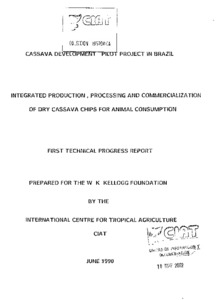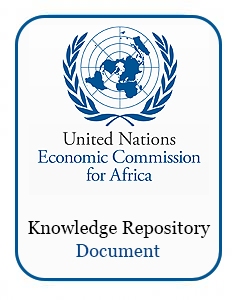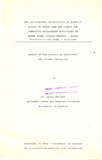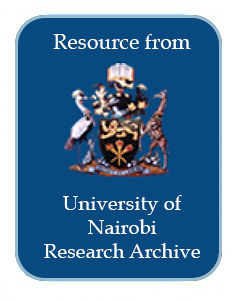Cassava development: Pilot project in Brazil. Integrated production, processing and commercialization of dry cassava chips for animal consumption: First technical progress report for period ending march 1990
To improve the welfare of the rural poor involved in cassava production in communities in Ceara, NE Brazil, an integrated production, processing, and commercialization project of cassava chips for animal consumption was established.







